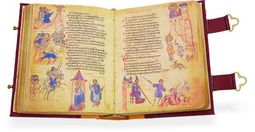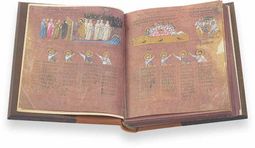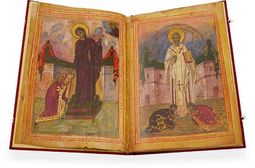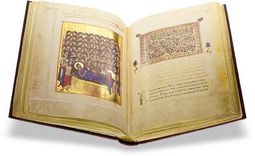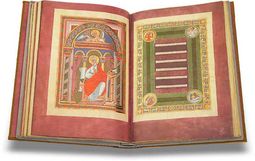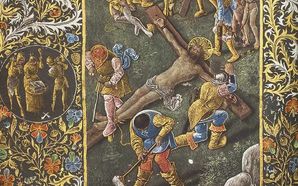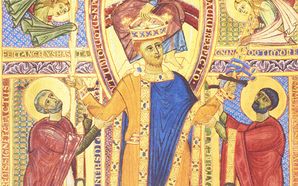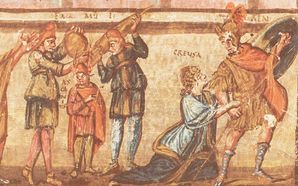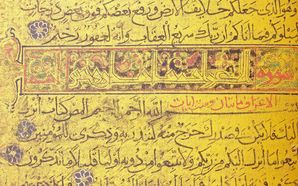Byzantine Illumination
After the fall of Rome in the 5th century, the Roman Empire’s eastern half endured, based in its capital of Constantinople. Modern historians coined the term “Byzantine” to differentiate between the classical Roman Empire and its medieval successor state.
The art, culture, and technology of antiquity was passed down to the Byzantines in unbroken succession. The art produced throughout the history of the Byzantine Empire is distinguished both by its high level of refinement as well as its remarkable degree of homogeneity across nearly 1,000 years. It is highly symbolic, deemphasizing form in favor of dynamic lines and rich colors, standardizing facial types with flat features and piercing eyes, creating strict figural poses, and using burnished gold backgrounds extensively.
Demonstration of a Sample Page
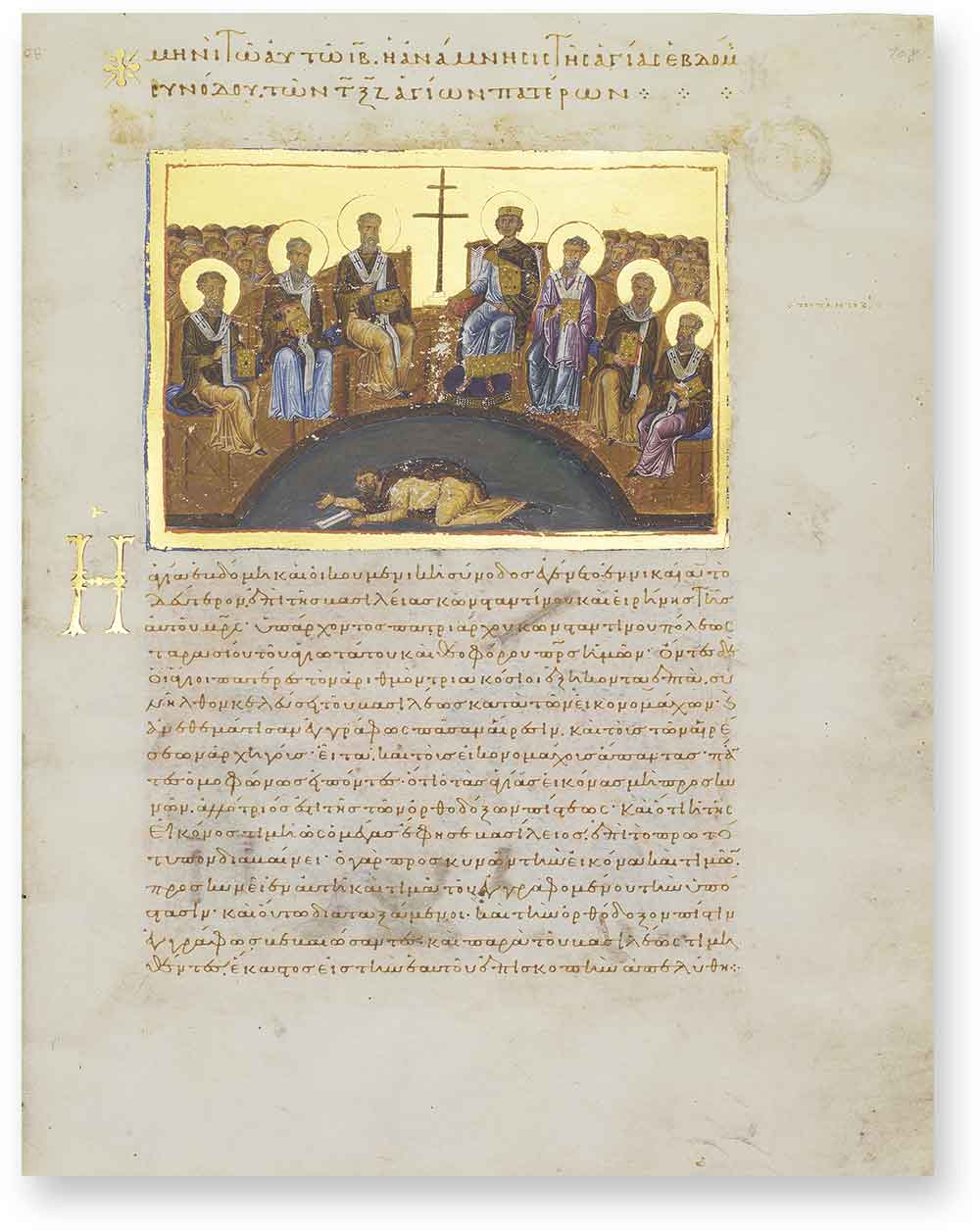
Menologion - Book of Saints of Emperor Vasilios II
Second Council of Nicaea
This is one of 430 miniatures set against brilliant gold backgrounds in the Byzantine style, a sign of the wealth and sophistication of their imperial patron, whose nearly 50-year reign was one of the longest in history. Although richer than contemporary manuscripts of this type, they are exemplary of Byzantine Illumination, which was remarkably homogenous across 1,000 years.
Although never losing sight of its classical roots, that realism was replaced by a more abstract and iconic aesthetic favoring the symbolic power of images and seeking the perfection and standardization of forms. This image makes wonderful use of perspective as the most important figures sit in a semicircle surrounded by the other 350+ attendees of the council that resolved the Iconoclasm once and for all.

